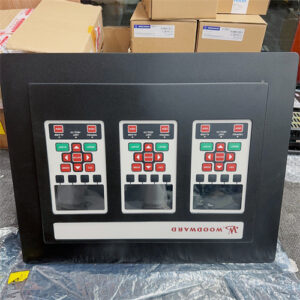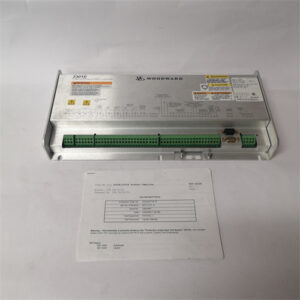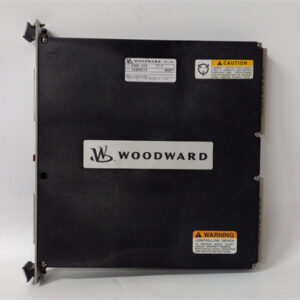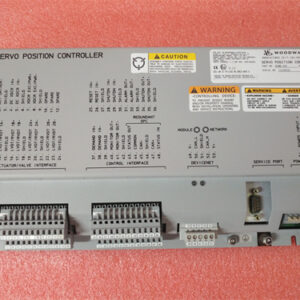الوصف
The WOODWARD 9904-808 is a mechanical-hydraulic speed droop governor specifically designed for steam turbines. It is a part of the TG-17L (Lever) series and is configured for operation at 2400 rpm. This model features clockwise (CW) drive shaft rotation and a speed setting adjusted via a lever mechanism. It is also ATEX certified, making it suitable for hazardous environments.
WOODWARD 9904-808: Mechanical-Hydraulic Speed Droop Governor (TG-17L, 2400 rpm, CW Rotation)
The WOODWARD 9904-808 is a robust, self-contained control device crucial for the reliable operation of small to medium-sized steam turbines. It’s particularly well-suited for applications where stable speed control with a defined droop characteristic is sufficient, rather than precise constant-speed (isochronous) operation. Its “Lever” designation indicates a specific mechanical interface for speed setting, and often, models in this series are constructed with stainless steel components for enhanced durability.
Product Overview
The 9904-808 operates as a mechanical-hydraulic governor. It continuously senses the turbine rotor speed and compares it to an internal setpoint. Based on this comparison, it precisely adjusts the turbine’s governor valve to regulate the inlet steam flow, thereby controlling the turbine’s speed.
- Product Type: Mechanical-Hydraulic Speed Droop Governor
- Manufacturer: Woodward
- Series: TG-17L (Lever-operated)
- Application: Small to medium steam turbines (e.g., driving pumps, compressors, generators).
- Key Feature: Speed droop control (not isochronous).
- Rated Speed: Designed for operation at 2400 rpm.
- Speed Setting Mechanism: Lever-operated (manual adjustment).
- Drive Shaft Rotation: Clockwise (CW) rotation.
- Output: 23.7 N·m (17.5 ft-lb) rotary output. (The TG-17 series generally provides higher work output than the TG-13 series).
- Environmental Certification: ATEX certified (suitable for potentially explosive atmospheres).
- Rated Speed @ 2° Droop: 2010 rpm (a specific configuration point for droop).
- Material: Often features Stainless Steel (SS) components for enhanced corrosion resistance, as implied by the product descriptions for the TG-17L SS governors.
Detailed Product Description
The WOODWARD 9904-808 provides a reliable and cost-effective solution for steam turbine speed control. It’s part of the well-established TG-17 governor series, known for its higher work output compared to the TG-13 series, and offers specific configurations for different speed ranges and mechanical interfaces.
Here’s a breakdown of its features and how it functions:
- Mechanical-Hydraulic Operation: This governor is a self-contained unit. It senses turbine speed using an integrated driveshaft-driven ball head assembly. An internal, driveshaft-driven oil pump generates the necessary hydraulic pressure (1379 kPa / 200 psi for TG-17 governors, higher than TG-13’s 1034 kPa / 150 psi) to create the force required to move and control the turbine’s governor valve. This mechanical-hydraulic design makes it inherently robust and minimizes reliance on external electronic components for its core speed sensing and actuation.
- Speed Droop Control: The 9904-808 operates on a speed droop principle. This means that as the load on the turbine increases, its speed will slightly decrease (or “droop”) proportionally. This characteristic is often desirable in applications where load sharing among multiple prime movers is needed, or where a slight, predictable speed variation under load changes is acceptable.
- Direct Turbine Connection: The governor directly couples to the steam turbine’s rotor or an auxiliary shaft to sense the turbine’s speed. Its rotary output terminal shaft directly connects to the turbine’s governor valve, precisely controlling the inlet steam flow.
- 2400 rpm Capability: This specific model is designed for turbines operating at a nominal speed of 2400 rpm. This speed capability is vital for ensuring proper integration and performance with the prime mover.
- Lever-Operated Speed Setting: The “L” in TG-17L and the part number imply that the speed setpoint is adjusted via a mechanical lever. This provides a simple and direct method for operators to change the desired turbine speed, often preferred for manual, on-the-fly adjustments.
- Clockwise (CW) Rotation: The 9904-808 specifically features a clockwise drive shaft rotation and output shaft rotation. This is a critical mechanical specification for ensuring compatibility with the turbine’s interface.
- Higher Work Output: As a TG-17 series governor, it offers a higher work output of 23.7 N·m (17.5 ft-lb), enabling it to control larger or more demanding turbine valves compared to the TG-13 series (which provides 16 N·m / 12 ft-lb).
- Rugged Construction and ATEX Certification: Built for demanding industrial environments, these governors feature robust construction and a self-contained sump. The ATEX certification confirms its suitability for use in potentially explosive atmospheres common in industries like oil & gas, petrochemical, and power generation.
In essence, the 9904-808 provides a reliable, robust, and higher-work-output solution for steam turbine speed control, particularly for applications around 2400 rpm where a mechanical-hydraulic, lever-operated governor with clockwise rotation is required.
Technical Specifications (General)
Typical Applications
The WOODWARD 9904-808 is primarily used in industrial settings that employ small to medium steam turbines for mechanical drive or power generation, especially where:
- Speeds are around 2400 rpm: Ideal for turbines operating within this speed range.
- Higher Work Output is Needed: To operate larger or stiffer turbine control valves.
- Speed Droop Control is Desired: For load sharing or applications tolerant of slight speed variation with load changes.
- Mechanical-Hydraulic Simplicity: A preference for a self-contained, robust mechanical governor over electronic systems.
- Lever-Based Speed Adjustment: Where operators manually adjust the speed setpoint via a lever, for example, during startup or load changes.
- Clockwise Rotation: The turbine’s mechanical drive interface requires CW rotation for the governor.
- Common Applications:
- Pumps: Controlling steam turbines that drive process pumps.
- Compressors/Turboexpanders: Regulating the speed of steam turbines used to drive compressors in various industrial processes.
- Generators: Controlling the speed of steam turbines connected to generators for power generation, often in parallel with other power sources.
- Fans: Managing steam turbines that power large industrial fans in power plants or other heavy industries.

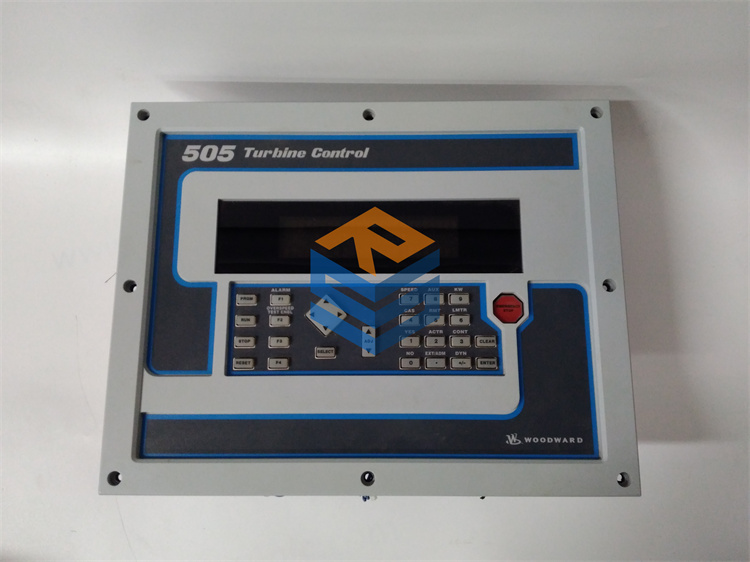

 +86 15340683922
+86 15340683922 +86 15340683922
+86 15340683922